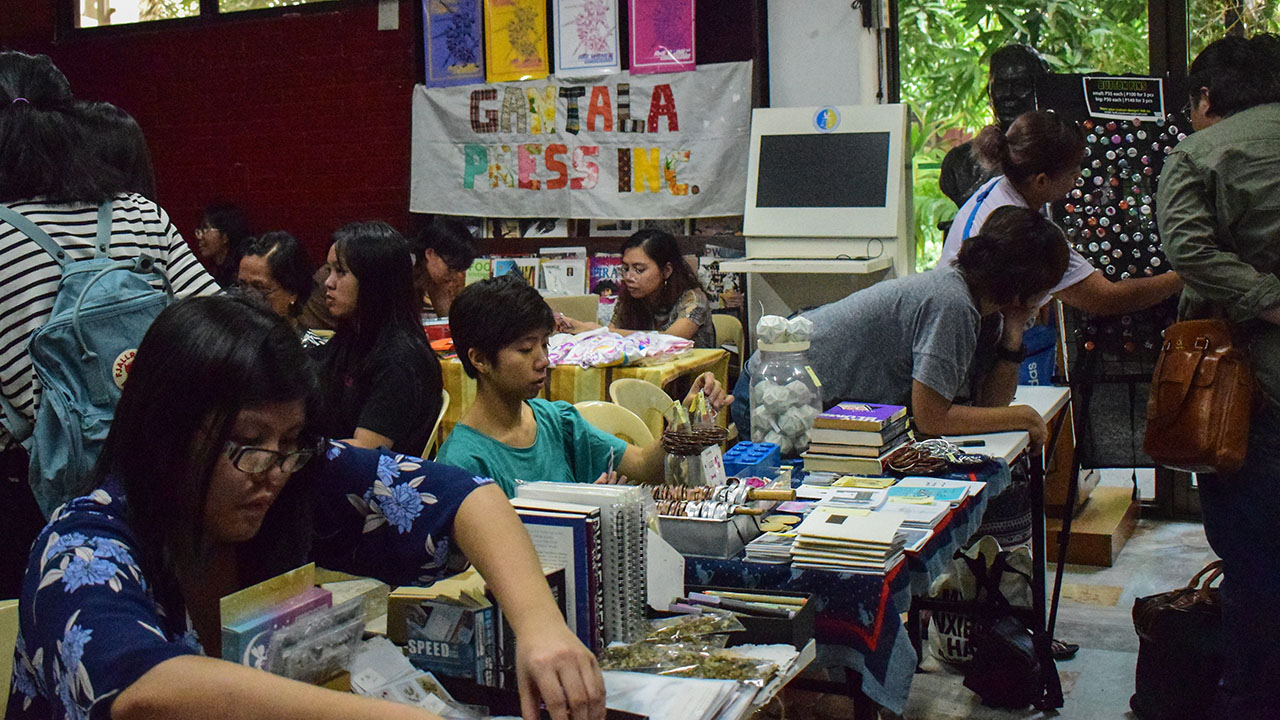The role of women in social and climate action emphasized at an all-women art fair
An all-women art fair, Gandang Ganda sa Sariling Gawa (GGSSG), celebrated and highlighted the importance of having spaces for women across the country last March 7, at the University of the Philippines – Diliman, Quezon City. Coinciding with the celebration of Women’s Month, the event continued to tell the story of women through art in its fourth year. With the theme “Madre Tierra: Women and Climate Justice”, the event emphasized the role of women from marginalized sectors of the country in the climate justice movement.
A safe space for women creators
With the lack of spaces for women, GGSSG intends to engage women artists and writers alike to come together and create art. “We decided to create a woman fair kasi a lot of art fairs and events like komiket and bltx that are still male-dominated, para the women artists can come out and feel safe along with other women,” Rae Rival of Gantala Press said. The event opened the scene for genre exhibitors who are mothers, teachers, teenage girls, and the like, to allow new teams and small organizations to promote and sell their work, and eventully establish that art is democratic and for all.

Creators came together to showcase art along with other women, but aside from art and poetry, they also held a forum for their advocates. It featured indigenous art from the lumads and highlighted the importance of art in raising social issues that affect women, such as sexism, misogyny, discrimination, and sexual harassment.
“It’s not just a fair,” Marian Hukom of MarianieArt explained. “It’s a space where we can share and discuss our beliefs in a peaceful manner…and like encourage each other and educate, this place talaga, you can feel the women spirit here.”
Women for climate justice
Various representatives from different organizations shared their situation in the discourse portion of the event. Amihan, the National Federation of Peasant Women in the Philippines, was the first to educate about women’s struggle in the setting of cramped evacuation centers in the midst of the Taal Volcano eruption. They mentioned that since the government has little funding for the evacuees, some women who cannot work had resorted to prostitution.

Bai Indigenous Women’s Network promoted the recognition of indigenous women to be recognized as women of the Philippines, be given rights, be treated properly as the frontliners of defending the island’s land and water.
Meanwhile, PAMALAKAYA – Pilipinas fisherfolk discussed the situation of the female anglers who are victims of the unjust practices of the administration such as limiting their access to the sea where they depend their livelihood on.
Women in the place of revolution
Artists and writers also used different mediums to advocate the movement they believe in. Small groups were able to promote the need to become aware about the issues that affect the masses.

In addition, most of the artists used elements that make people question their work. “Most of my pieces are incorporated with rice grains from Nueva Ecija, in that way people will notice and ask the story behind it, kung bakit ko siya nilagay doon,” Nadia Cruz of Bicecrafts explained. “My side of the family is gravely affected by the rice tariffication law, kasi continuous na bumababa ‘yung price ng rice and at the same time hindi naibabalik ‘yung inutang nila para sa puhunan.”
The women exhibitors are also part of massive movements that promote feminism and real reform in society.

Altogether, they urged to send a message that the fight for women’s liberation continues, because no matter how progressive society gets, there will always be a tendency of discrimination towards women.
Emphasizing women’s place in the revolution, empowering events like GGSSG are venues to uplift women in the struggle against sexism and gender roles, to show that they are not only women for the household, but women for the society.



